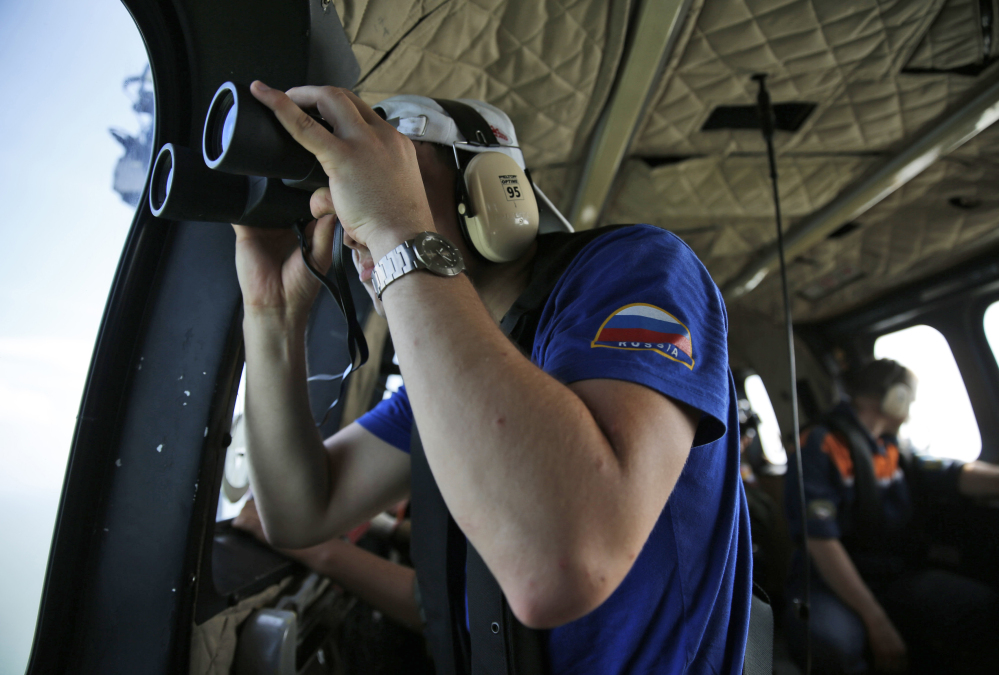PANGKALAN BUN, Indonesia — Divers and an unmanned underwater vehicle on Wednesday spotted the tail of the AirAsia plane that crashed into the Java Sea with 162 people on board, an important finding because the jet’s all-important black boxes are located in that part of the aircraft.
Powerful currents and murky water continued to hinder the operation, but searchers managed to get a photograph of the debris – nearly 6 miles from where Flight 8501 lost contact Dec. 28 – after it was detected by an Indonesian survey ship, National Search and Rescue chief Henry Bambang Soelistyo told reporters.
One released image appeared to show an upside down “A” painted on a piece of metal, while another grainy shot depicted some mechanical parts.
“Today we successfully discovered the part of the plane that became the main aim since yesterday,” Soelistyo said. “I can ensure that this is part of the tail with the AirAsia mark on it.”
Tony Fernendes, AirAsia’s chief executive officer, welcomed the news.
If it is the right part of the tail section, he tweeted, then the cockpit voice and flight data recorders, or black boxes, “should be there.”He said the airline’s priority still is to recover all the bodies “to ease the pain of our families.”
The carrier, meanwhile, said families of those killed would be compensated in accordance with Indonesian laws.
Each will receive $100,000, Sunu Widyatmoko, president of AirAsia Indonesia, told reporters in Surabaya.
So far, 40 corpses have been found, including an additional one announced Wednesday, but time is running out.
At two weeks, most corpses will sink, said Anton Castilani, head of Indonesia’s disaster identification victim unit, and there are already signs of serious decomposition. Officials are hopeful many of the more than 122 bodies still unaccounted for will be found inside the fuselage, which is believed to be lying near the tail.
The Airbus A320 went down halfway through a two-hour flight between Indonesia’s second-largest city of Surabaya and Singapore, killing everyone on board. It is not clear what caused the crash, but bad weather is believed to be a contributing factor.
Just before losing contact, the pilot told air traffic control he was approaching threatening clouds, but was denied permission to climb to a higher altitude because of heavy air traffic.
Send questions/comments to the editors.



Success. Please wait for the page to reload. If the page does not reload within 5 seconds, please refresh the page.
Enter your email and password to access comments.
Hi, to comment on stories you must . This profile is in addition to your subscription and website login.
Already have a commenting profile? .
Invalid username/password.
Please check your email to confirm and complete your registration.
Only subscribers are eligible to post comments. Please subscribe or login first for digital access. Here’s why.
Use the form below to reset your password. When you've submitted your account email, we will send an email with a reset code.